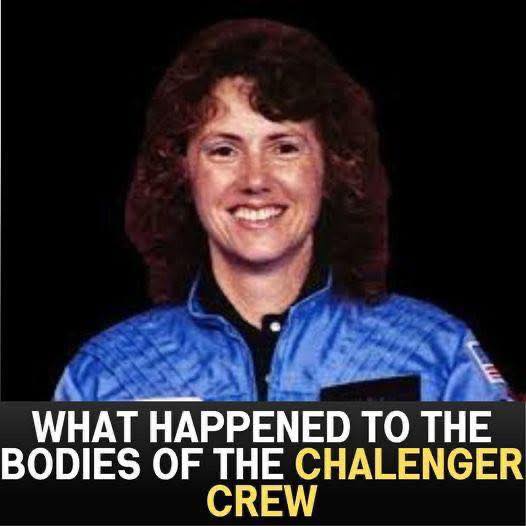The Challenger Disaster: A Tragic Chapter in Space Exploration
On January 28, 1986, the Challenger disaster unfolded, marking a profoundly tragic moment in the annals of space exploration. The Space Shuttle Challenger, on its 10th flight, tragically disintegrated just 73 seconds after launch, claiming the lives of all seven crew members aboard. This catastrophic event was not only a significant loss for NASA but also a devastating moment for the entire nation, as millions watched the launch live on television. The event starkly illustrated the precarious balance between human ambition and the unforgiving nature of space travel, leading to profound implications for future missions.
The Crew of Challenger
The crew of Challenger included a diverse group of individuals, each with their own unique backgrounds and aspirations. Among them was Christa McAuliffe, an educator selected to be the first teacher in space through NASA’s Teacher in Space program. Her inclusion was intended to inspire students across the country, symbolizing the potential of human achievement. Alongside McAuliffe were Francis R. Scobee, the mission commander; Michael J. Smith, the pilot; Ronald McNair, a mission specialist; Ellison Onizuka, also a mission specialist; Judith Resnik, a mission specialist; and Gregory Jarvis, a payload specialist. Together, they represented the pinnacle of human endeavor in science and education, championing the importance of exploration and innovation.
The Cause of the Tragedy
In the aftermath of the disaster, investigations revealed that the primary cause of the Challenger’s failure was the malfunction of an O-ring seal in one of the shuttle’s solid rocket boosters. On that fateful morning, temperatures were unusually low, which compromised the integrity of the O-rings, allowing hot gases to escape and causing the shuttle to break apart. This technical failure was compounded by inadequate communication and decision-making processes within NASA, where concerns raised by engineers about the O-rings were not heeded. The Rogers Commission, formed to investigate the accident, highlighted these systemic issues, leading to significant reforms in NASA’s safety protocols. It became clear that an organizational culture of risk-taking and the dismissal of engineers’ warnings had played a pivotal role in this tragedy.
The Nation’s Response
The Challenger explosion sent shockwaves across the nation, leaving many in disbelief and mourning. President Ronald Reagan addressed the nation later that evening, expressing condolences to the families of the astronauts and emphasizing the spirit of exploration that the crew embodied. His words resonated deeply: “The crew of the space shuttle Challenger honored us by the manner in which they lived their lives.” In the aftermath, a national period of mourning commenced, with schools and communities holding memorial services to honor the fallen astronauts. The tragedy resonated deeply, serving as a poignant reminder of the risks associated with space exploration and igniting a national conversation about safety in aeronautics.
Recovery and Investigation Efforts
Recovery operations commenced swiftly, involving the collaborative efforts of NASA, the U.S. Navy, and various engineering teams. Utilizing divers, remotely operated vehicles, and sonar technology, they scoured the Atlantic Ocean for debris from the shuttle. By March 1986, significant portions of the wreckage, including the crew compartment, had been located and retrieved from the ocean floor. The recovery of the crew’s remains was conducted with the utmost respect, and thorough examinations were undertaken. While full autopsy results were never publicly released, honoring the wishes of the families involved, it is believed that while the crew likely did not survive the explosion itself, they may have been conscious for a brief moment during the descent. This fact underscored the importance of understanding the human experience in such catastrophic failures.
Legacy and Lessons Learned
The legacy of the Challenger disaster extends far beyond the immediate tragedy. It prompted a reevaluation of safety standards in NASA’s operations and led to critical reforms in how missions were conducted. The agency implemented a rigorous risk management process, ensuring that all safety concerns were thoroughly addressed before any future launches. Furthermore, the Challenger crew is commemorated through numerous educational programs and scholarships designed to inspire future generations in the fields of science and technology. Memorials at the Kennedy Space Center Visitor Complex serve as a lasting tribute not only to the Challenger astronauts but to all those who have made the ultimate sacrifice in the pursuit of knowledge and exploration. The disaster also sparked an overhaul of the NASA Space Shuttle program, reinforcing the necessity of a systematic safety culture and encouraging open dialogue between engineers and management.
Honoring the Fallen Astronauts
The astronauts who lost their lives aboard Challenger—Francis R. Scobee, Michael J. Smith, Ronald McNair, Ellison Onizuka, Judith Resnik, Gregory Jarvis, and Christa McAuliffe—are remembered not just for their tragic end but for their remarkable contributions to science and education. Their courage and dedication to advancing human exploration continue to inspire countless individuals around the globe. Educational initiatives in their memory, such as the Challenger Center for Space Science Education, serve to engage young minds in STEM (Science, Technology, Engineering, and Mathematics), ensuring that their legacy fosters future generations of explorers and innovators. By sharing their stories, we keep their memory alive, ensuring that the lessons learned from this tragedy serve to better future endeavors in space travel.
In conclusion, while the Challenger disaster remains a somber chapter in history, it also represents the resilience of the human spirit and our relentless pursuit of discovery. As we reflect on this event, it is essential to honor the memory of the astronauts who bravely ventured into the unknown, reminding ourselves that every step forward in space exploration carries with it lessons learned from those who came before. Their legacy is etched in the progress of humanity, reminding us to strive for the stars while respecting the sacrifices made along the way. Moreover, the Challenger tragedy serves as a vigilant reminder of the importance of safety, communication, and integrity in all aspects of exploration, urging us continually to advocate for a proactive approach to risk management in the face of innovation.

















